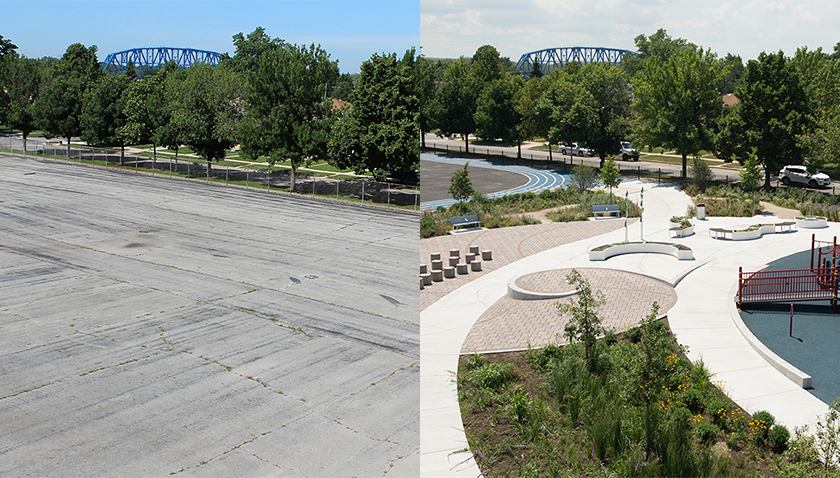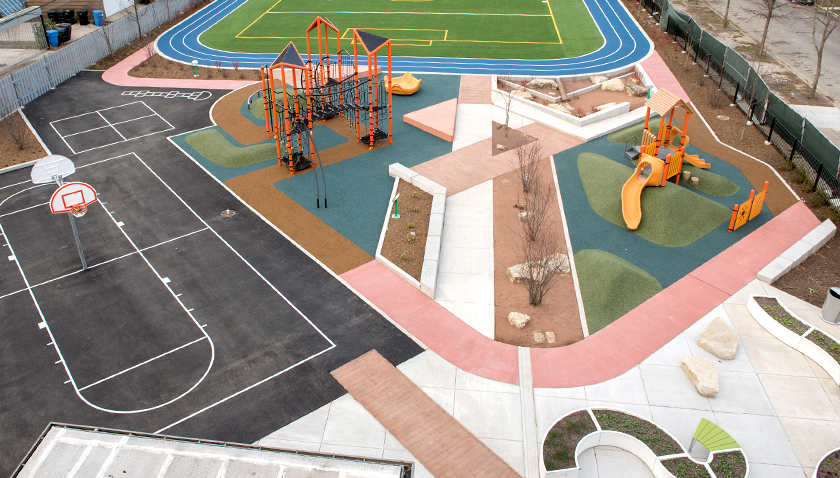City: Chicago
Country / US State / US Territory: Illinois
Type of Solution: Streets
Climate Impact: Extreme Temperatures and Urban Heat Island Effect; Air Quality; Extreme Precipitation and Flooding
Social Value Created: Social Justice and Equity for Vulnerable Communities; Social Cohesion; Public Health and Safety; Active Living; Food Security
and Nutrition; Public Spaces and Playspaces
The Space to Grow program was started in 2013 to redevelop asphalt school lots into green infrastructure playgrounds for stormwater management. The playgrounds are designed to manage a 100-year storm lasting 24 hours. Additionally, green infrastructure filers air, improving air quality, and contributes to urban cooling, counteracting extreme temperatures and the urban heat island effect. As of 2016, six playgrounds have been completed and 28 more are planned for completion by 2019.
The playgrounds are also designed to create other social benefits. 90% of students serviced by the playgrounds are from low-income families, improving social resilience of vulnerable communities. Further, the playgrounds are intended to be educational and provide space for community gatherings, increasing social cohesion.
Grissom Elementary School is one school that participated in the Space to Grow program. The school redesigned a schoolyard to include outdoor classroom areas, community vegetable gardens, a jogging track, and green infrastructure for stormwater management. Community vegetable gardens improve access to nutritional food and increase social cohesion, and athletic facilities promote physical activity. Both increase access nutrition and engagement in physical activity helping to counteract childhood obesity, a growing crisis in the United States.
James Wadsworth Elementary School is a STEM school that also participated in the Space to Grow program. An unsafe, deterioration playground and basketball court were redesigned with the help of the students. The new design features a playground, basketball court, turf field, jogging track, two half-court basketball courts, and outdoor classroom areas. There are rain gardens that help manage stormwater runoff, and a decorative water feature that uses stormwater runoff captured from the roof.


Sources:
C40 Cities. (November 15, 2016). Cities100: Chicago – adsorptive playgrounds foster social cohesion. Retrieved from https://www.c40.org/case_studies/cities100-chicago-adsorptive-playgrounds-foster-social-cohesion.
Space to Grow. (n.d.). School profiles. Retrieved from http://www.spacetogrowchicago.org/about/school-profiles/.

